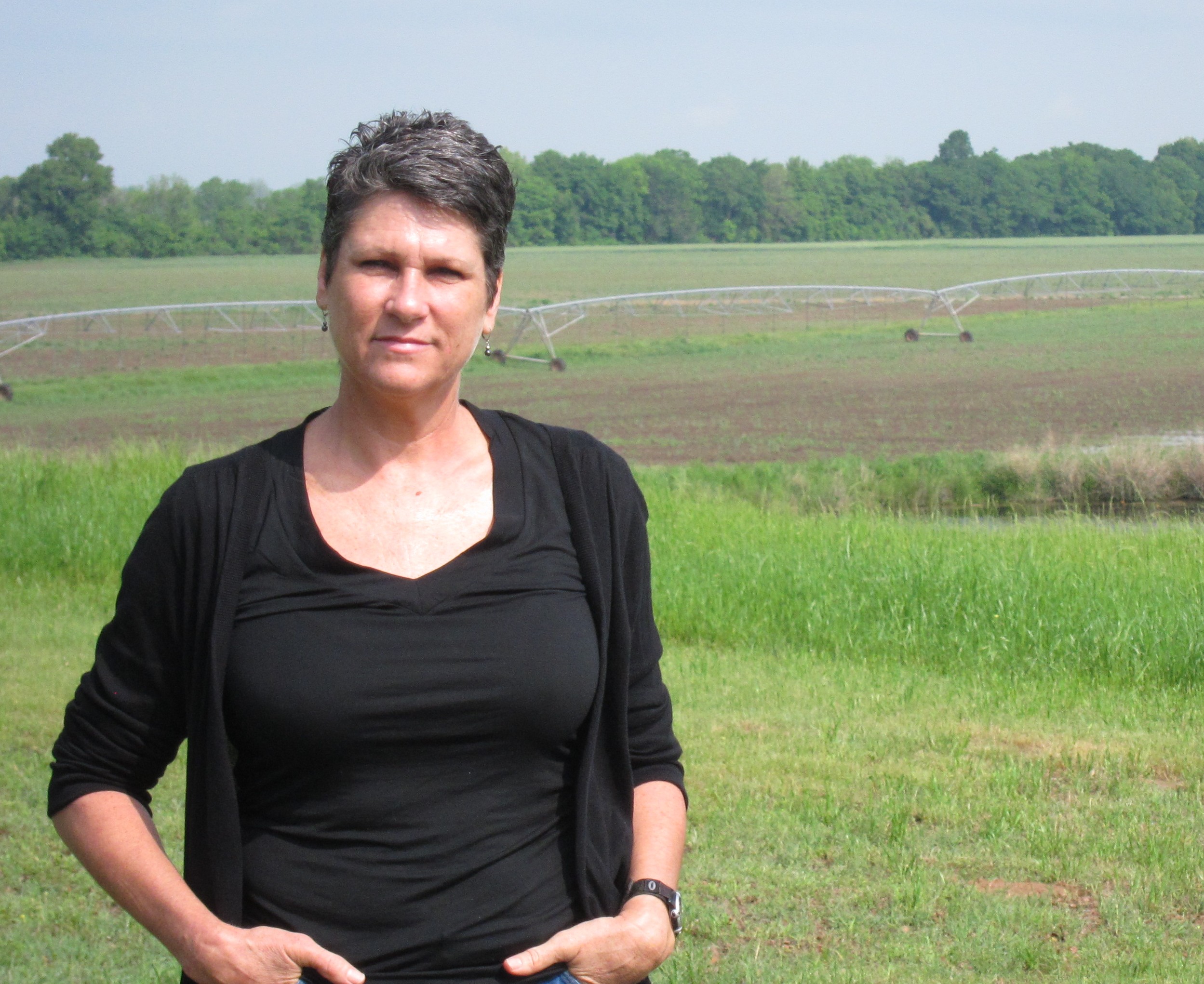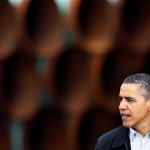The Keystone Shutdown: Talking Tar Sands Pipelines With Lara Skinner

Photo by Tom Pennington/Getty Images
Pipe is stacked at the southern site of the Keystone XL pipeline on March 22, 2012 in Cushing, Oklahoma.
This week, the Keystone pipeline had to shut down for days because of possible safety issues on a portion of the line between Missouri and Illinois. The existing Keystone pipeline, which has only been running for a few years, takes heavy oil harvested from sand pits in Canada to refinieries in the Midwest and a massive oil depot in Cushing, Oklahoma. The Keystone XL pipeline will be a large addition to that existing network, and a southern leg is already under construction from Cushing to refineries on the Gulf Coast, facing protests and questions about how the company is using eminent domain to seize private land for the pipeline.
We reached out to Dr. Lara Skinner, Associate Director of Research at Cornell University’s Global Labor Institute, to get her perspective on the current shutdown and some of the safety issues particular to pipelines transporting “diluted bitumen.” That’s heavy, sour oil harvested from the sand pits of Canada and mixed with hydrocarbons so it can flow through a pipeline. Many of the issues with the existing pipeline are relevant to the impending Keystone XL pipeline. Skinner has co-authored two studies on the economic and environmental impact of the new pipeline and is openly critical of the risks that it may pose.
Q: Can you describe for us what’s happening with the existing Keystone pipeline right now?
A: You know, my expertise is really in the Keystone XL pipeline. But in the process of trying to figure out some of the implications of that pipeline, we looked at phase one of the pipeline, Keystone. Specifically looking at what was the potential from spills.
And we looked at the proposals TransCanada was putting in about the projected spill rate of the Keystone XL pipeline. So we looked back and said, ‘Okay, what did they project for the first one and what actually happened?’

Photo courtesy of Cornell University
Lara Skinner says both the old and new sections of the Keystone pipeline pose a safety risk.
And once they started operating [the original Keystone pipeline] in October 2010, there’s been 35 spills. They said that there would be about five spills over a fifty year span. And that they would be minor spills.
In short, their estimates for the number of spills on phase one of the pipeline were way underestimated. About a hundred times under what has actually been happening with these spills.
Yes, a lot of the spills have been minor, they’re not major spills like what happened at the Kalamazoo river in June 2010, but you have to keep in mind that these pipelines are carrying tar sands — diluted bitumen — which pose additional dangers to the public. And they present really special challenges in trying to clean them up.
Q: So with the situation right now with the existing Keystone pipeline, how significant is that? Is it unusual for something like this to happen?
A: Compared to what’s happened in the past, it is a pretty significant shutdown. The phase one Keystone pipeline has been shut down numerous times because of the number of spills that it’s had.
Tar sands pipelines in general have been having a lot more accidents and leaks than regular pipelines. Between 2007 and 2010, pipelines transporting tar sands oil in the Midwest region have spilled three times more oil per mile than the U.S. national average.
Q: Are there specific regulations for pipelines carrying this kind of oil — diluted bitumen?
A: One of the things that came out of our report looking at the economic impact of Keystone XL and potential spills is that there was no independent, comprehensive risk assessment done for Keystone XL. It wasn’t required in the process, so the State Department didn’t do it. And I believe it’s the same for phase one as well.
So with the potential risk that comes along with tar sands spills, it’s very disconcerting for the communities that live along the pipeline that there wasn’t a comprehensive spill risk assessment done before these pipelines are constructed.
Another interesting piece of information that was in a State Department report is that the Keystone XL pipeline would be crossing more than 1,700 rivers, lakes and streams. And that includes big rivers like the Missouri, the Yellowstone and of course, two major aquifers.
After our interview concluded, Skinner emailed some additional information on the steel being used in the existing Keystone pipeline and for construction of the southern leg of the XL pipeline. “In our research, we discovered that a significant portion of the steel [for Keystone XL] would not be produced in the U.S., it would be manufactured in India, China and elsewhere,” she writes. “This connects to what’s happening with the Keystone shutdown now because the vast majority of pipe for Phase 1 was produced outside of the U.S. by the same company that TransCanada is contracting with for steel pipe for Keystone XL – Welspun.”
Spinner says that Welspun uses “substandard steel.” In December 2010, the federal Pipeline and Hazardous Materials Safety Administration (PHMSA) ordered TransCanada to dig up ten sections of the Keystone pipeline after tests showed that defective steel could have been used in its construction. The agency found that from 2007 to 2009, there were several pipelines built containing “significant amounts of defective pipe that stretched under pressure,” according to a report in the St. Louis Post-Dispatch. “Investigators traced the problems to defective steel produced by several mills, but mostly by Welspun Power and Steel, a manufacturer based in India,” the paper wrote.
This is not the first time the existing portion of the Keystone pipeline — also known as “Phase One” — has been shut down. In June 2011, after several leaks along the pipeline in North Dakota, federal regulators issued an order for the pipeline to shut down, saying that if it kept running without fixes being made, the pipeline “would be hazardous to life, property and the environment.”
And a civil inspector and a TransCanada engineer have separately come forward alleging that TransCanada isn’t following proper protocols in construction and maintenance of their pipelines. The Canadian federal energy regulator has now initiated an audit of TransCanada’s procedures for inspection and engineering, according to the CBC.
In a response to the CBC stories, TransCanada CEO Russ Girling writes on the company’s website that the existing Keystone pipeline “has experienced zero pipeline-related spill incidents since it began operation in 2010. The few leaks that have occurred on Keystone have all occurred at our pump station properties and were related to leakage from small-diameter fittings and seals located above ground. All of these leaks were small in volume and were quickly cleaned up with no environmental impact.”



